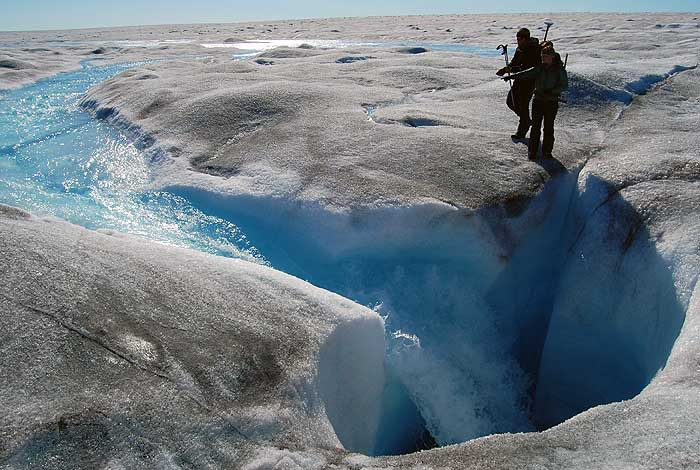
Clouds are like nature’s blanket, and their effect on temperature is one of the first things you learn in introductory meteorology courses. For an example, think of temperatures at night when skies are clear versus when it’s cloudy. On that clear night, the temperature falls quicker than on a night where skies are overcast. Clouds, by nature, trap heat in the atmosphere below them, causing temperatures to stay higher.
Professor Tristan L’Ecuyer says that his study found surface temperatures were up to three degrees higher as a result of increased cloud cover over the Greenland Ice Sheet. It does seem like the melt itself may be causing a feedback loop of its own: moisture in the air is a key component for cloud formation, which in turn traps heat in, which causes more melting, which puts more moisture in the air and allows more clouds to form.
How did L’Ecuyer and his team come to their conclusions? It’s thanks to two new high tech NASA satellites launched over the past decade, CloudSat and CALIPSO. The researchers took X-ray images of clouds between 2007 and 2010 over the ice sheet to study cloud composition and structure. From there, a team at the University of Leuven in Belgium led by graduate student Kristof Van Tricht combined the satellite data with ground observations and climate and snow model simulations to understand the effects of these clouds on ice melt.
“Once you know what the clouds look like, you know how much sunlight they’re going to reflect and how much heat from Earth’s surface they’re going to keep in,” L’Ecuyer explains.
What they found is that the normal daytime ice melt was not refreezing at night, and was running off instead. That process also fed on itself, accelerating the ice melt overall. This may start to explain Greenland’s rapid ice loss in a more tangible form.
L’Ecuyer and Van Tricht’s work is important. One issue with present-day climate models is their inability to properly resolve cloud cover. Most models have far underestimated the amount of ice-sheet loss, in something meteorologists and climatologists studying climate change attribute to “cloud-climate feedback.”
Resolve that issue, and climate models may become a lot more accurate in the future. “This is something we have to get right if we want to predict the future,” L’Ecuyer argues.
For those interested, the full study is available free of charge from the Nature Communications website.


